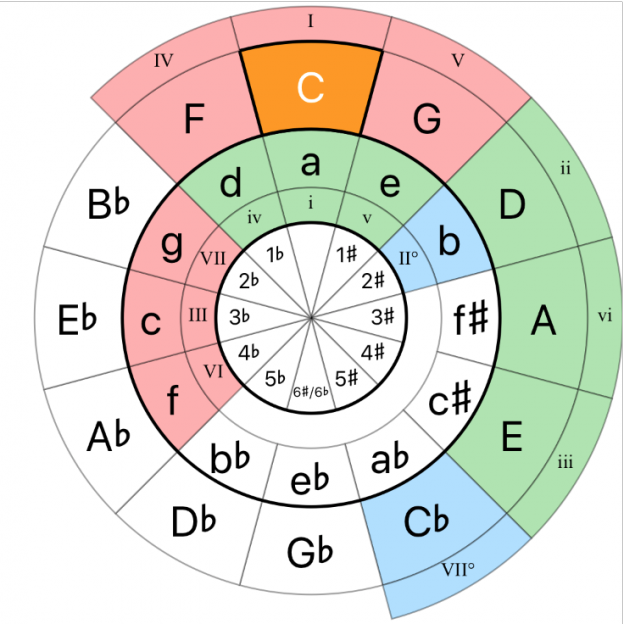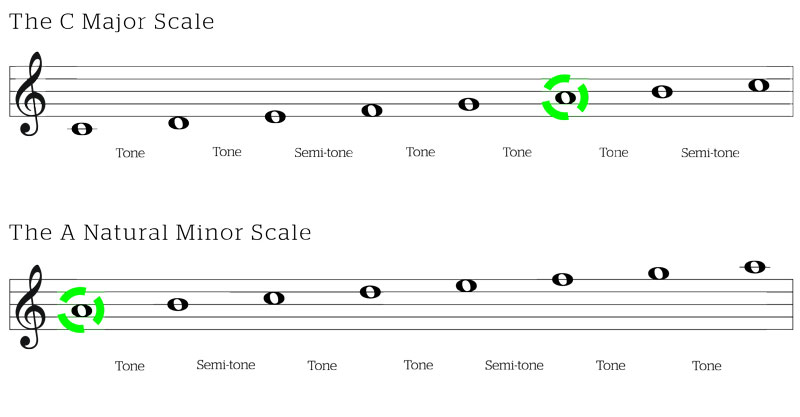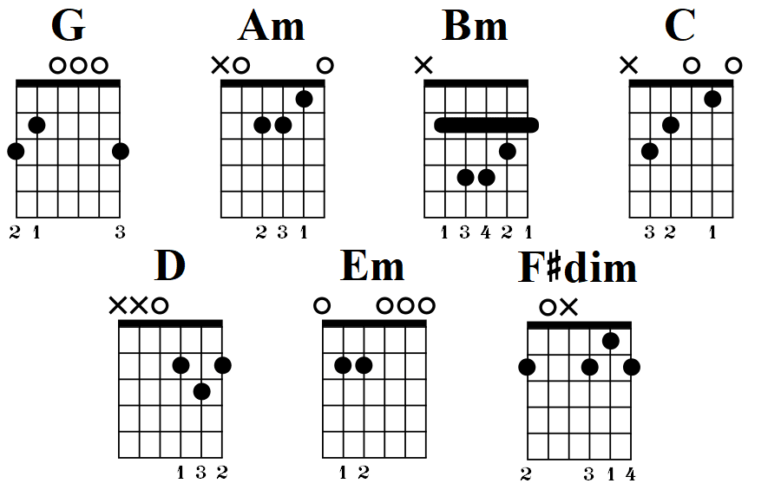
Our first number is 6, we add one to get 7, so we get the 7th chord (Bb)ĭo the same for the other numbers. Otherwise you need to add 1 to the number, then take the corresponding chords. If this number is 1, then you use the first chord. Look at the first number you got from the dice. Start with the first chord in the key (in the key of C minor the first chord is C minor). As an example, let’s assume that you got 6,2,4. Throw a dice 3 times and write the resulting numbers down. With the exception of the diminished chord (which has some special ways to use it, and so we will ignore it for the time being), the chords in a key can be played one after the other in any order and they will sound good.Īll of this means that, as in the major scale, we can compose a song just by starting and ending on the first chord of a key and using other chords from the same key in random order. The first chord will always sound “final” in all keys. a progression in C minor will usually start and end on C minor). Most of the time a chord progression in a minor key will start and end on the first chord of the key (i.e. In other words, with the symbol III we would indicate an E major chord, so we need to specify the flat in front of it as bIII to indicate the Eb chord.

The chords symbols just refer to this fact, warning us that their root notes are lower than what we would expect from a major scale. Here are the notes for the C major and C minor scale:Īs you see, the 3rd, 6th, and 7th notes in the minor scale are “flatted” respect to the major scale. Why is that? Well, to understand it you have to know that everything in music theory is written in respect to the major scale, not the minor scale. In particular, the 3rd, 6th, and 7th chords are marked with the flat sign. Here it is:Īs you can see, some of the chord numerals, on the first row of the table, have a flat sign in front. The first note of a minor key is always associated with a minor chord, the second note always with a minor chord, and so on.Īs I did for the major scale, I compiled for you a table with all the chords for every minor key. With this I mean that the order in which the major and minor chords appear is always the same. The chord structure for the minor scale is the same for all keys. In other words, every note in the scale is associated with a chord. The chords associated with the A minor scale are A minor, B diminished, C major, D minor, E minor, F major, G major. The chords from a scale are strictly related with the notes on a scale an A minor scale is made by the notes A B C D E F G (see our previous lesson on that, linked above). On the other hand, the order of these chords in the natural minor scale is different than it was for the major scale.

#C major relative chords how to#
Today instead we will have a look at the chords associated with the minor scale and how to use them to compose your own songs.Įxactly like the major scale, any minor scale is associated with a set of seven chords - three major, three minor, one diminished. You can use a diminished chord as a bridge between two chords which acts as a sudden dramatic change in dynamics but is quickly resolved to a stable chord – your tonic chord.On a previous lesson we have seen how to play the natural minor scale on the guitar. So how can you utilize the diminished chord in your music subtly? 1. In modern Western music the diminished chord is underused (compared to major, minor, 7th chords) as many feel the sound causes too much tension, and with common chord progressions such as 16 being the perfect amount of tension and release for storytelling, the diminished chord doesn’t have a place. Diminished chords are the 2nd chord in the scale.

Therefore, F# is the relative minor to A major. In a minor scale, the order is rotated starting from the 6th chord from the major scale, this is known as the relative minor. For example in A major we craft the following chords:

In a major scale, diminished chords are the 7th chord in the scale. For example if C is our root note, Eb is our minor 3rd which is 3 semitones away from C (b3), and Gb is our diminished 5th which is 3 semitones away from Eb, and 6 semitones away from C (b5).Ĭ diminished is: C Eb Gb.


 0 kommentar(er)
0 kommentar(er)
